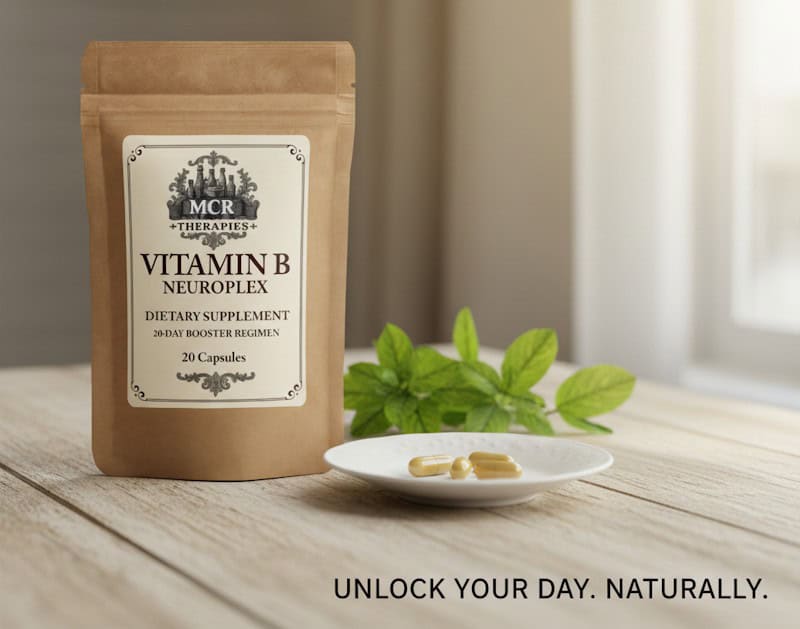Essential oils are used in a variety of ways
Essential oils are so named because they contain the actual essence of the plant, or, in other words, the plant's fundamental character. They are concentrated extracts made from the leaves, flowers, fruit, seeds, or bark of certain plants that contain the aromatic chemicals that give plants their particular odor or scent. Some oils are just used for their scent. However, essential oils have many additional uses than making your house smell nice.
Aromatherapy, massage, skincare, and even cleaning are all methods to utilize essential oils. There are several essential oil oils available, each with its own distinct qualities. So, what are the many classifications of essential oils?
Fragrance
Some essential oils are categorized based on their fragrance or botanical origins. These are flowery, citrus, and herbaceous. These are the oils that are often used to just make your house smell beautiful, while they may also be used to disguise unpleasant cooking, pet, musty, or wet odors. Store-bought or homemade candles are one of the most common methods to utilize essential oils for aroma. They may, however, be used in reed diffusers or oil burners.
Floral oils have a pleasant, delicate aroma and are derived from flower blooms. Floral essential oils that are popular include jasmine, rose, and ylang-ylang. Citrus oils are extracted from the peels of citrus fruits such as oranges, lemons, limes, and grapefruits. These oils have a refreshing, energizing, and uplifting aroma and may be used to increase energy levels (1).
Citrus oils, particularly lemon, are popular in cleaning goods. Herbaceous oils are derived from the leaves or stems of plants like lavender, rosemary, and thyme. The aroma of these oils is pleasant, clean, and earthy. Spicy oils like cinnamon and clove are invigorating and warming, making them excellent for usage throughout the winter. These oils are often used in Christmas candle and oil burner mixtures.
The most popular house smells tend to be ylang ylang, chamomile, lavender, and geranium, as well as bergamot, citrus, and fruity (2).

Therapeutic
The medicinal characteristics of other essential oils are used to classify them. These might be soothing, energizing, or inspiring. Lavender, jasmine, peppermint (3), chamomile (4), and ylang-ylang are among the essential oils that are often used to assist soothe, relax, and promote sleep. Peppermint, which also promotes alertness (5), and rosemary, which may improve cognition (6) and long term and working memory, are two energizing essential oils (7). Similarly, the sage essential oil has been shown to aid memory retention in Alzheimer's patients as well as promote cognition and memory (8).
Because peppermint oil may assist in freshening breath and destroying germs in the mouth (9), it is often used in chewing gum, toothpaste, and mouthwash. Because it may help soothe an upset stomach, it is often included in antacid drugs (10). Eucalyptus oil is widely recognized for its decongestant effects, which aid in the relief of coughs and colds (11). It's another essential oil that's often used in over-the-counter treatments like lozenges, cough syrups, and vapor rubs.
Some individuals see essential oils as the realm of hippies or witch doctors, not to be taken seriously as conventional treatments. However, research is starting to show that these aromatic oils have numerous advantages other than merely smelling nice.
Chemical
Essential oils may also be classified according to their chemical makeup. These compounds are what give essential oils their beneficial characteristics; some essential oils include up to 500 distinct substances (12).
Terpenes, furanocoumarins, and phenylpropanoids are the most prevalent types. Terpenes, the most common kind of essential oil, are distinguished by their powerful, pungent fragrance. They are volatile, which means they readily evaporate. Terpenes are classified into three types: limonene, which is found in citrus and bergamot oils; cineole, which is found in eucalyptus, rosemary, peppermint, and sage (13); and carvone, which is found in dill and caraway (14). Furanocoumarins are a chemical class of essential oils. These chemicals provide the plants with natural insect defense (15). They are also notorious for being phototoxic. As a result, they may make the skin more vulnerable to the effects of the sun and should not be used on the skin. Phototoxic essential oils include lemon, grapefruit, angelica, and cumin. These oils are deemed safe in body care products that are applied to the skin for a brief period of time and then rinsed away. Soaps and body wash, for example (16). These oils should be taken with caution if you are taking other medicines since grapefruit oil, in particular, may interfere with them (15). In contrast to terpenes, phenylpropanoids are non-volatile (17) and have a broad spectrum of odors, from floral to woody. More crucially, phenylpropanoids such as safrole in basil oil, myristicin in nutmeg oil, anethole in star anise and fennel oil, cinnamaldehyde in cinnamon oil, and eugenol in clove oil have all been demonstrated to destroy cancer and tumor cells (18). These chemicals are also anti-inflammatory (19), which is why using essential oils for pain management is beneficial.
Top, middle and base notes
Essential oils are also classed as top notes, middle notes, or base notes. Top notes have a light, fresh aroma that rapidly evaporates; they are often employed as the first layer in a perfume mix and to brighten a blend. Top note aromatic essential oils include peppermint, lemon, orange, and bergamot. Middle notes have a sweeter scent and provide body to a perfume mixture; they linger longer than top notes and may assist in balancing an essential oil combination. Middle note smells are common in essential oils produced from plants and flowers such as tea tree, lavender, rosemary, jasmine, and geranium. Finally, base notes have the strongest aroma and last the longest in perfume mixes; they are often utilized for anchoring and calming. Base note essential oils include sandalwood, patchouli, and frankincense (20).
When choosing essential oils, keep the intended impact in mind and make your selection appropriately. A mix with a thicker base note, for example, maybe more ideal for relaxation, whilst a blend with a lighter top note may be more energizing. It is possible to develop blends that are customized to individual requirements by studying the various types of essential oils.
Finally, the most effective technique to choose an essential oil is to explore and find what works best for you. There are so many different kinds of essential oils available that there is certain to be one that matches your requirements.
References
- Olfactory Influences on Mood and Autonomic, Endocrine, and Immune Function https://www.ncbi.nlm.nih.gov/pmc/articles/PMC2278291/
- 10 Best Scented Oils For Candles In The UK – June 2022 https://www.bestproductsreviews.co.uk/scented-oils-for-candles
- A Systematic Review of the Effect of Inhaled Essential Oils on Sleep https://bit.ly/3xEbhgt
- The effects of chamomile extract on sleep quality among elderly people: A clinical trial https://www.naturalhealthresearch.org/wp-content/uploads/2018/05/Chamomile-Extract-Improves-Quality-of-Sleep-in-Older-Adults.pdf
- Modulation of cognitive performance and mood by aromas of peppermint and ylang-ylang https://pubmed.ncbi.nlm.nih.gov/18041606/
- Aromas of rosemary and lavender essential oils differentially affect cognition and mood in healthy adults https://bit.ly/3Hi9Jfb
- Plasma 1,8-cineole correlates with cognitive performance following exposure to rosemary essential oil aroma https://journals.sagepub.com/doi/full/10.1177/2045125312436573
- Systematic Review of Clinical Trials Assessing Pharmacological Properties of Salvia Species on Memory, Cognitive Impairment and Alzheimer's Disease https://www.ncbi.nlm.nih.gov/pmc/articles/PMC6493168/
- Antimicrobial efficacy of five essential oils against oral pathogens https://www.thieme-connect.com/products/ejournals/pdf/10.4103/1305-7456.119078.pdf
- Peppermint Oil https://www.aafp.org/pubs/afp/issues/2007/0401/p1027.html
- What treatments are effective for the common cold in adults and children? https://biblio.ugent.be/publication/8577147/file/8577150
- Essential Oils, Part III: Chemical Composition https://pubmed.ncbi.nlm.nih.gov/27427817/
- The Effects of Essential Oils and Terpenes in Relation to Their Routes of Intake and Application https://www.ncbi.nlm.nih.gov/pmc/articles/PMC7084246/
- Carvone (Mentha spicata L.) Oils https://www.sciencedirect.com/topics/agricultural-and-biological-sciences/carvone
- The Distribution of Coumarins and Furanocoumarins in Citrus Species Closely Matches Citrus Phylogeny and Reflects the Organization of Biosynthetic Pathways https://www.ncbi.nlm.nih.gov/pmc/articles/PMC4641707/
- Using phototoxic essential oils safely https://www.baseformula.com/blog/phototoxic-essential-oils
- Phenylpropanoid constituents of essential oils https://pubmed.ncbi.nlm.nih.gov/775232/
- Antitumor Phenylpropanoids Found in Essential Oils https://www.hindawi.com/journals/bmri/2015/392674/
- A Review on Anti-Inflammatory Activity of Phenylpropanoids Found in Essential Oils https://www.ncbi.nlm.nih.gov/pmc/articles/PMC6270723/
- Essential Oils and Aromatherapy: How to Use Essential Oils for Beauty, Health, and Spirituality https://doctorlib.info/herbal/essential-oils-aromatherapy/7.html
The post Types of Essential Oils – Explained appeared first on https://gqcentral.co.uk













